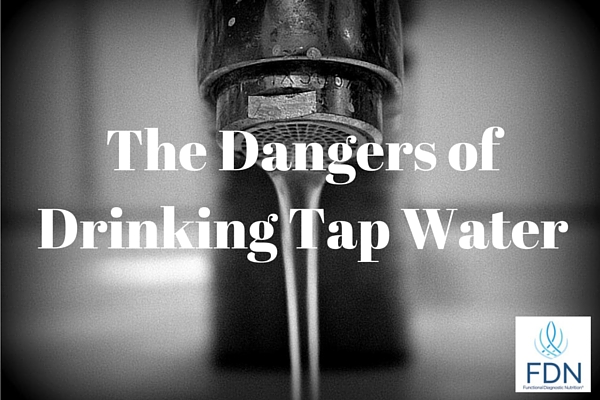The Shameful Facts
Within the past century, the extensive use of chemicals in agriculture and big industry has polluted every source of water on the planet. Traces of toxic synthetic chemicals can even be found in polar icecaps and the Arctic Ocean. Despite our intelligence, we’re literally destroying our supply of the two most essential elements of life!
According to the Environmental Protection Agency, there are over 700 chemicals in our drinking water, and that includes “clean” sources such as wells and springs. Of all the dangerous chemicals found in drinking water, chlorine and fluoride are two of the most prominent. In fact, both of these chemicals are added intentionally!
Chlorine
Chlorine is used in drinking water to kill dangerous organisms that can cause severe illness. While this is a nice benefit, it comes at an expensive cost to our health.
The byproducts that result from the chlorination of water, such as trihalomethanes, are actually a much larger concern than the chlorine itself. These byproducts don’t break down easily and tend to accumulate in the body faster than the detoxification system can handle. They’ve been linked to cancer, are known to damage the heart, lungs, kidneys, and nervous system, and are lethal to the beneficial bacteria in the intestines that are crucial to immunity and digestion.
Fluoride
Fluoride is commonly added to drinking water to help prevent tooth decay. It’s linked to cancer and osteoporosis, can damage the heart, brain and kidneys, and can cause behavioral disorders, birth defects, arthritis, hormone imbalance, and excessive calcification of arteries and joints.
With these significant risks, you’d think that fluoride must provide a significant benefit, but in contrast, research indicates that its addition to water makes little difference in the prevention of tooth decay. What we have here is another disastrous example of science trying to outsmart nature. As can be seen from the work of Dr. Weston A. Price, proper diet is all that’s needed to prevent tooth decay. Even if the fluoride was effective, we shouldn’t all be put at risk to justify the unhealthy eating habits of modern society.
Drinking Water isn’t the Only Concern!
Most people don’t realize that their skin is like a sponge and will absorb much of what it comes in contact with. Because skin doesn’t have the capability of regulating absorption as well as the intestines, anything absorbed through the skin is likely to get into the blood stream. As such, every time we shower, bathe, or swim in a pool, we are literally soaking our skin with toxic chemicals.
The heat associated with a shower or bath makes the problem worse. It promotes increased skin absorption, and by vaporizing some of the water, the chemicals in it can be inhaled and absorbed through the lungs.
Swimming pools present unique concerns as well. Chlorine can react with human compounds to produce additional toxic byproducts. Public pools are especially problematic based on the volume of people that swim in them and the fact that they often have higher levels of chlorine.
It’s estimated that you can absorb more chlorine byproducts from one hour in a swimming pool than from an entire week of drinking tap water! In fact, skin exposure to pool water has been found to have the most significant cancer risk of all forms of exposure to chlorinated water, and by a large majority.
How to Protect Yourself
Although this is alarming information, there’s plenty you can do to minimize your risk. The following suggestions will help you get started.
Drink Clean Water
Many of the toxic chemicals found in drinking water are dangerous in very small quantities. As such, it’s nearly impossible to identify them based on taste, and this increases the need to be sure that your drinking water is properly filtered.
The best type of filtration I know of is the combination of reverse osmosis and activated carbon. This combination is commonly combined into a single filtration unit that can be connected to your sink or refrigerator. An advantage of connecting it to your refrigerator is that your ice cubes will be purified along with your drinking water.
A less expensive alternative to the reverse osmosis filter is the faucet filter. Although it doesn’t filter as thoroughly as the reverse osmosis unit, it should be sufficient. Furthermore, it’s convenient when you need the fast flow of a faucet, and it’s also a great way to ensure access to clean water when you travel, because some models are portable.
One problem with filtering drinking water is that it filters it too well and removes the natural minerals and trace elements along with the chemicals. Many experts believe that drinking this type of water will cause these essential materials to be pulled out of your body. You can easily prevent this by adding a pinch of organic sea salt. While this may sound disgusting, only a tiny bit is necessary and you probably won’t even notice it.
Beware of Bottled Water
Bottled water is not the healthy option many people think it is. In fact, some bottled water is no less contaminated than ordinary tap water. The plastic bottle it comes in makes matters worse by leaching chemicals into the water, especially if it’s been exposed to heat. Furthermore, the enormous quantity of plastic bottles being produced has created significant environmental concerns.
While there are some quality brands of tap water, it’s best to drink filtered water as often as possible. However, keep in mind that it’s not a good idea to go without water and dehydrate yourself just because filtered water isn’t available. Tap water or bottled water are both much better than no water at all!
Avoid Plastic
As I just mentioned, plastic containers leach toxic chemicals into the water they contain. This means you want to avoid plastic cups, jugs, and sports bottles as often as possible. The best options are glass or stainless steel. You can easily find these online and from many major retailers.
Bathe in Clean Water
Showering and bathing in unfiltered tap water is more dangerous than drinking it. If you’re making the effort to drink filtered water, you should certainly try to shower and bathe in filtered water as well. Sante, the same company that makes the reverse osmosis filter that I previously mentioned, also makes an excellent shower filter. I’ve been using this filter for over a year and it’s great to have peace of mind and know that I’m not soaking myself in chemicals. Another nice benefit of this filter is that it’s easy to travel with and install on hotel shower heads.
As previously mentioned, the steam produced by a hot shower contains toxins that will be directly absorbed by the lungs when inhaled. You can minimize your exposure to these toxins by reducing the time you spend in the shower and keeping the water at a lower temperature.
If you prefer a bath over a shower, you can also find bath filters that work similarly to the shower filters. However, if your bathtub and shower are a common unit, you can use the shower head to fill the bathtub and avoid the need for the additional filter.
What About Swimming?
Unfortunately, I don’t have a good solution for the chemical exposure associated with swimming except to avoid chlorinated pools as much as possible. If you have your own pool, consider switching to a more natural form of filtration than chlorine. Although I don’t know much about this, I do know there are a few different options available. Using non-chlorine substitutes such as ozone, salt water based pools or pool ionizers can be healthier options for pool owners who wish to avoid the dangers of chlorine.








